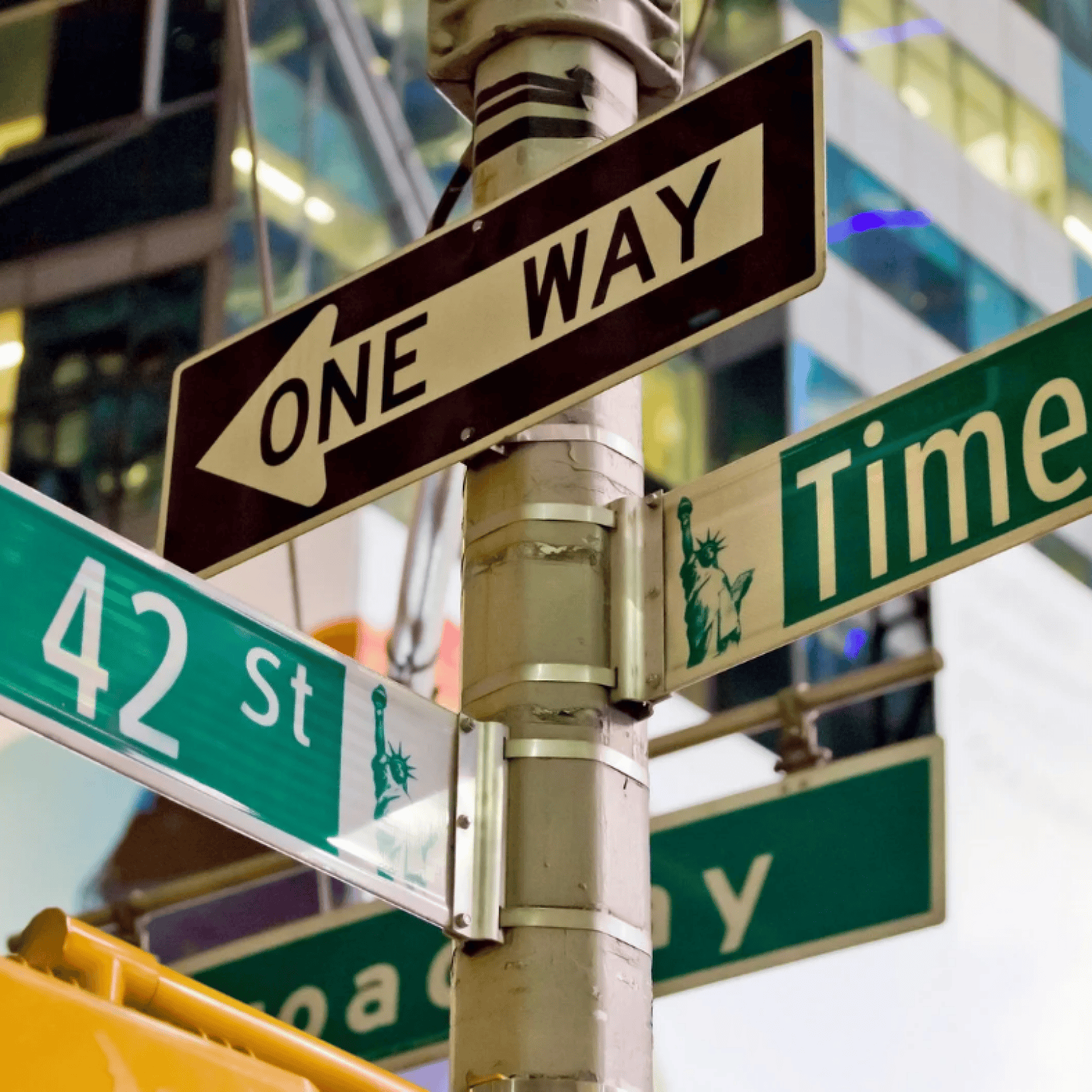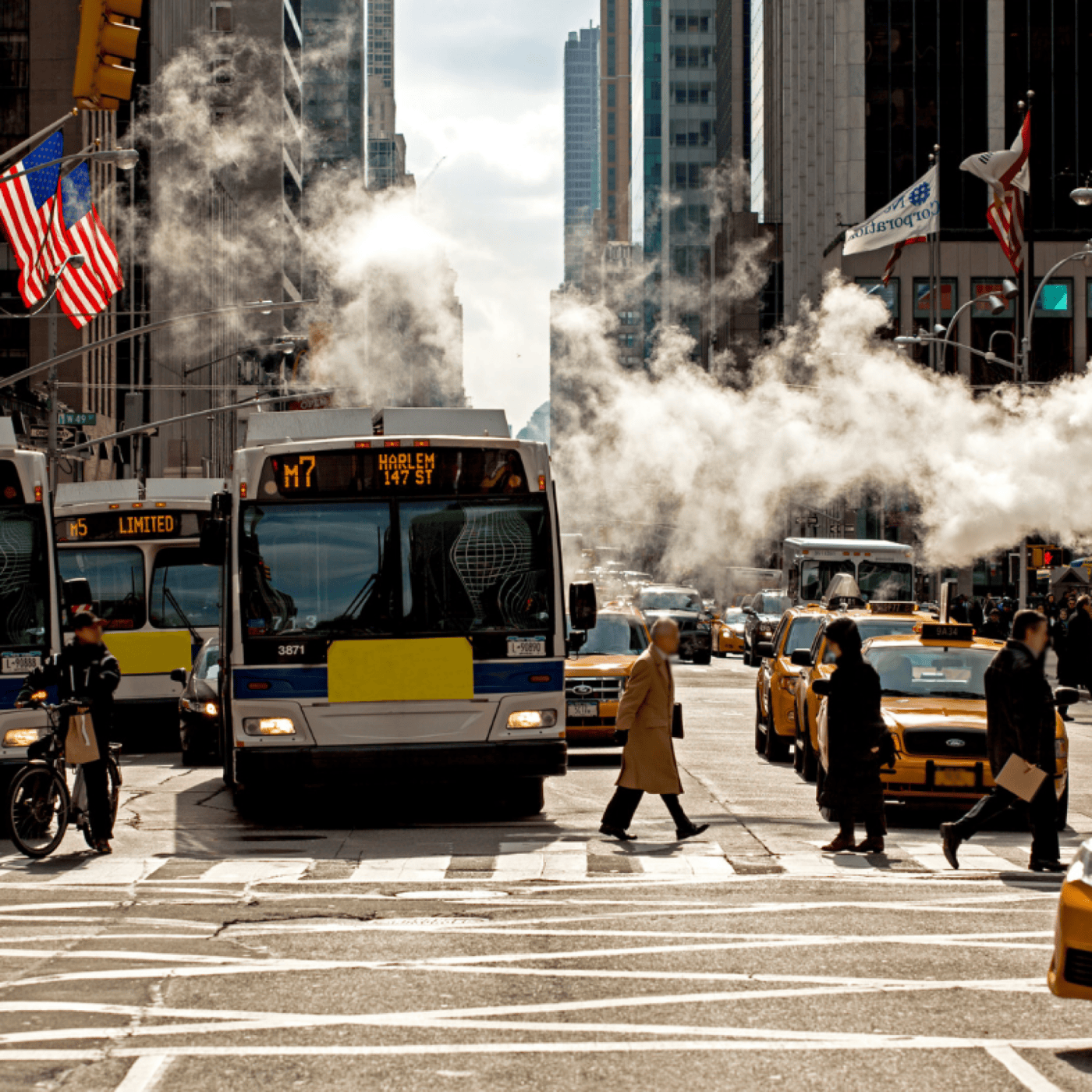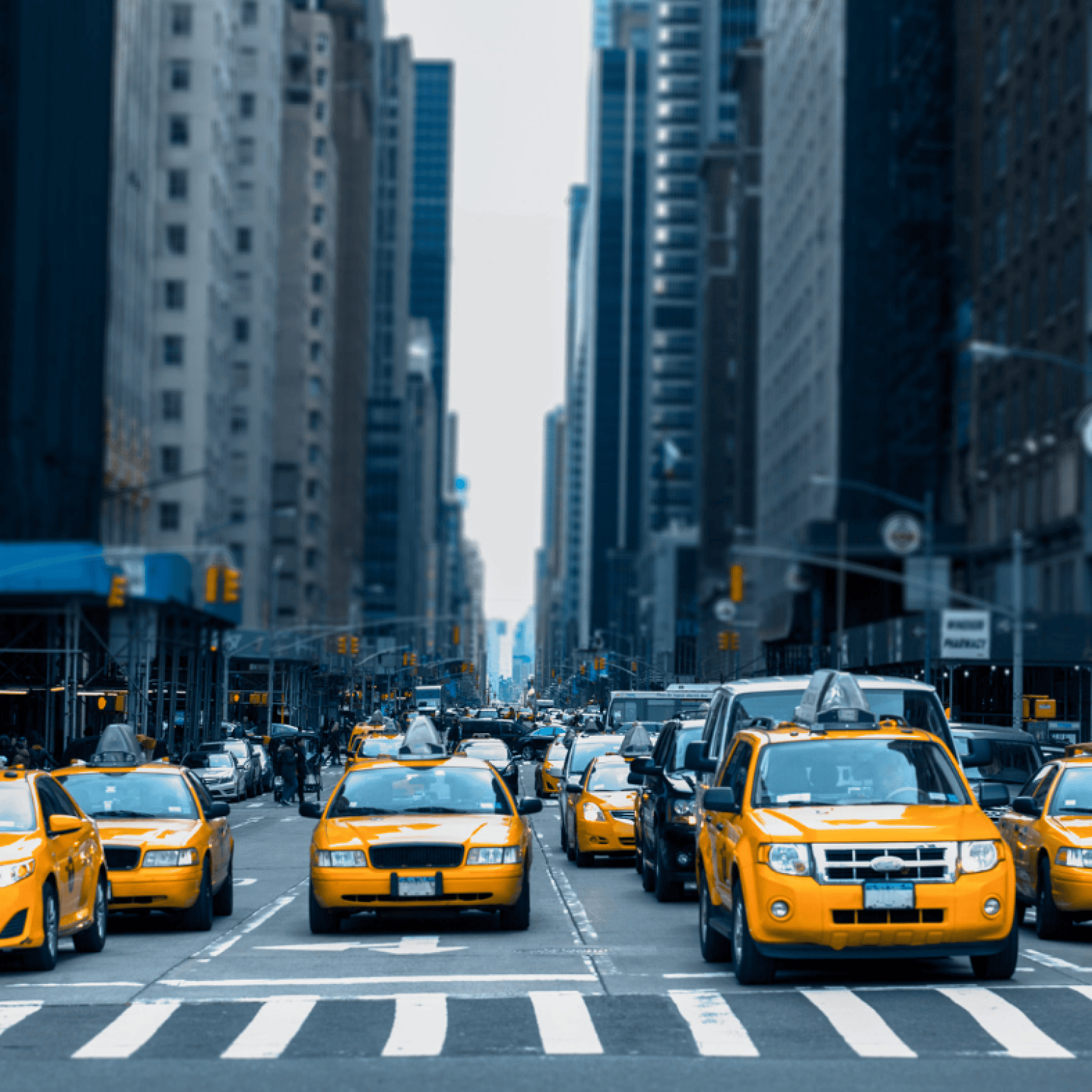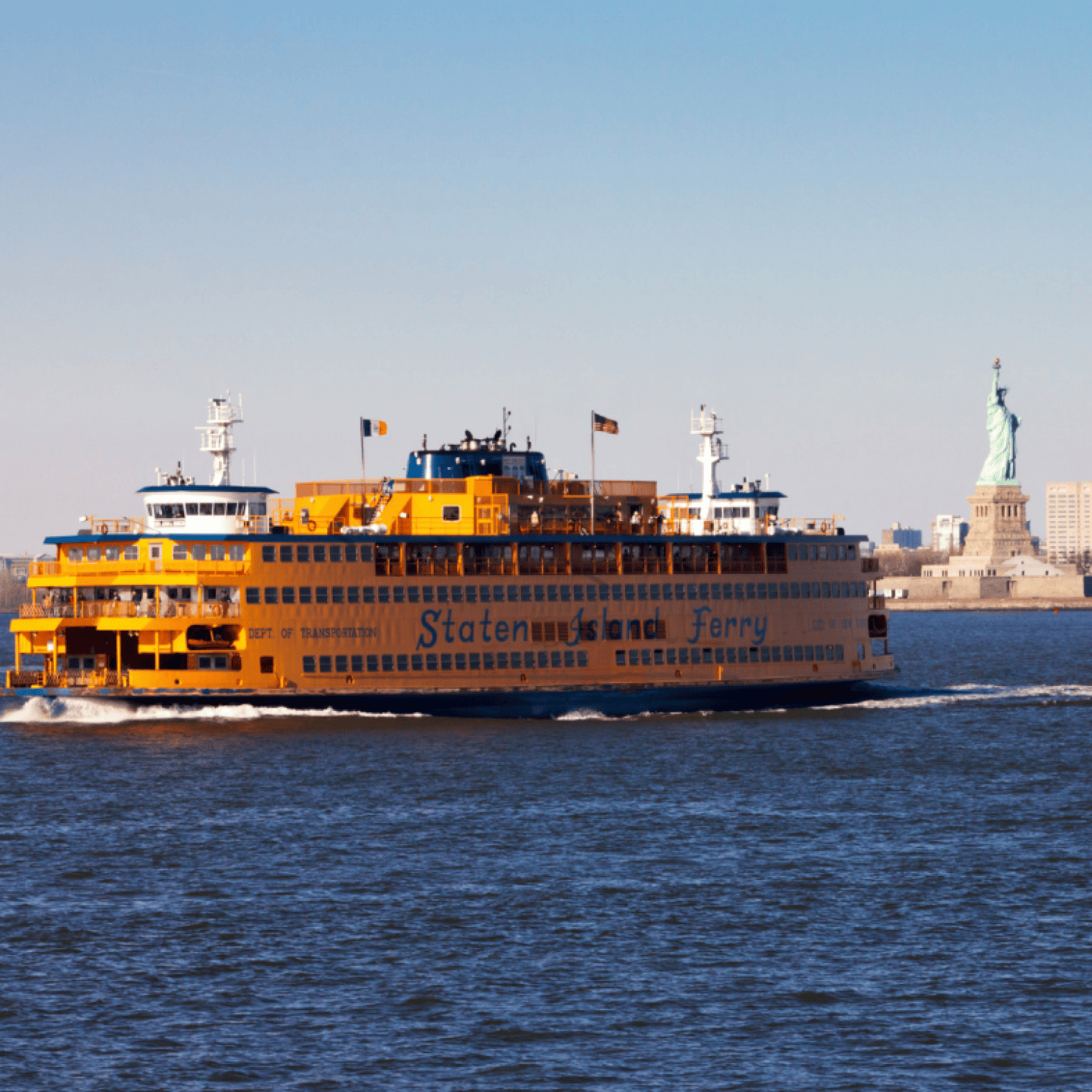Public Transportation and Navigating the Big Apple – plus a personal experience
For those visiting New York for the very first time, it can feel a bit overwhelming to face such a huge metropolis. Of course, Budapest is also a large city – no doubt about it – but our 4 metro lines can’t really compare to New York’s 36 subway lines (marked with numbers and letters: 1, 2, 3, 4, 5, 6, 7, A, B, C, D, E, F, G, J, L, M, N, Q, R, S, T, Z).
In reality, it’s actually quite easy to get around, and you’ll quickly get used to using public transportation.
Personally, I’ve never used public transit myself. There are different reasons I could give for that. Maybe it doesn’t make me the most “popular” tour organizer, since I always share my honest opinion. Of course, everyone recommends public transport in New York. But then again – the city is hard to access without it, so what else could people recommend?
Naturally, I will explain and show you how to use public transportation. Yes, I know – now you’re shocked, because everywhere you read how great the subway is in New York and that everyone suggests it. So you may be asking: why not me? I’m sure many of you are curious.
In our family, nobody uses it. The mindset is: better safe than sorry. Since my husband is a New Yorker – not someone who moved here a few years ago, but someone who was born here, as were his parents – it’s not that he forbids me from using it, but rather he simply doesn’t recommend it.
When I asked him, “But millions use it every day, so why can’t I?” he took my hand, sat me down on the couch, and shared all his local knowledge about the subway. And dear reader, I’m going to share the same with you.
**“Parking in New York costs between $20–35 per hour. Not every New Yorker can afford that, and even if they can, there’s no guarantee they’ll find a spot. The city is overcrowded – parking exists, but never enough for the number of residents and visitors.
Not a day goes by without a murder or sexual assault on the subway or at its stations. Statistically, it’s small compared to the millions of riders – but still, there’s always a chance it could be you.
When I argued that most of this doesn’t happen in Manhattan, my husband called his best friend, Tony, a retired police officer since last year. For context: Tony was in charge of rescue operations during 9/11 – an experience that scarred every cop who witnessed it. So he doesn’t waste time on petty issues; he knows firsthand what real disasters look like.
My husband asked: ‘Tony, can Ági take the subway?’
Tony’s reply: ‘No. Are you crazy? It’s dangerous. Every lunatic, homeless person, and drifter rides it.’
I said: ‘But not in Manhattan!’
Tony answered: ‘Where do you think they’re going? Why would they stay in the outer boroughs, where there’s nothing to steal, nothing to gain? They have to get into the city center. Brooklyn, Queens may seem calmer, but they’re not interested – they go where the money is. Not a day goes by without a crime happening on the subway or around it.’
I tried: ‘But the subway is full of police – I see them on TV.’
Tony: ‘Let me tell you what I tell my own family: if the subway were safe, why would you need so many police? In Hungary, you probably don’t have a cop stationed at every metro stop. And here’s the real issue – the police have their hands tied. They can’t intervene unless a life is at stake, otherwise they risk being fired. Believe me, I know…’
I asked: ‘Then why don’t people talk about this openly?’
Tony: ‘Because if everyone avoided the subway, Manhattan would collapse. Traffic would be paralyzed. So it’s better to keep people calm and quiet.’
As a former soldier (13 years of service), I understood exactly what he meant – I had experienced similar restrictions at the border. From that conversation on, I never asked about public transit at home again. Instead, I started reading countless articles and watching videos about the subway, trying to understand everything in theory. If you search TikTok for subway crime, you’ll find endless clips…
Now, I don’t want to scare you off or push you into using the subway – after all, millions really do ride it every single day. But I’m not in New York as a tourist. When we go into Manhattan, we go by car. We live in Queens, a truly calm and quiet neighborhood – it actually reminded me of Desperate Housewives when I first saw it.
That’s why my tours are unique: I organize them by car, not by subway like 99% of others.
But returning to the topic of transportation – with this article, I want to help you first understand how to find your way around, and then give you a full overview of the various options available to move around New York, so that you’ll always know where to go and how to get there.
I’ll go through each type of transportation in detail, so even before your trip to New York, you’ll already be familiar with how to use them!**
HOW TO NAVIGATE NEW YORK CITY

The most important thing you need to understand when visiting New York is the layout of Manhattan’s streets.
It’s essentially a grid – a network of streets and avenues. Streets run east to west, while avenues run north to south. Broadway, however, cuts across the grid diagonally. Pretty simple, right? 🙂
Fifth Avenue serves as the dividing line for addresses between East and West streets. In central Manhattan, nearly every street and avenue alternates one-way: if one street goes one direction, the very next one goes the opposite, ensuring traffic flows as smoothly as possible.
Almost every intersection is controlled by traffic lights. For pedestrians, there are the famous “WALK” and “DON’T WALK” signs – and I strongly recommend respecting them. It’s not always easy to see where cars are coming from, and New York taxi drivers really do drive recklessly.
The city’s main tourist attractions are scattered all over, so even though I still recommend walking as much as possible, sooner or later you’ll need to rely on public transport. People often say New Yorkers themselves only use the subway, taxis, and buses – I’d disagree. Tourists definitely do, and so do those who can only get to work via public transport. But in our own circle (family, friends, around 300 people), nobody uses it. Not because it feels “beneath them,” but simply because they’re cautious.
It’s true that traffic in this metropolis is chaotic, parking is scarce and very expensive, so few people drive. That’s also why I advise you not to rent a car – it will likely cost more than your entire vacation.
RUSH HOURS
The streets and sidewalks get especially crowded during peak hours: Monday to Friday from 8:00–10:00 a.m., 11:30 a.m.–1:30 p.m., and 4:30–6:30 p.m. These are the times when New Yorkers are commuting to work, heading home, or grabbing lunch. You’ll be amazed at the sheer number of pedestrians waiting at crosswalks. Keep these times in mind if you plan to travel by bus too – you might get stuck in traffic.
SUBWAY
New York’s public transport network is well-structured and reliable. Both the subway and buses are operated by the Metropolitan Transportation Authority (MTA). So grab yourself a MetroCard (the transportation pass), and you can hop on unlimited subway or bus rides for a full week.
The subway runs 24 hours a day, though trains are less frequent at night. Because it never really closes, service interruptions for maintenance or schedule changes are fairly common. Always check the posted notices and service updates displayed in stations.
Occasionally (though rarely), police may stop you for a check. Don’t worry – it’s just routine, something that became more common after 9/11.
If you’d like to fully understand how to navigate New York by subway and choose the right type of ticket or pass, I’ll write a separate article on that.
For now, here are three basic things to keep in mind when using the subway:
- Identify the right line that takes you to your destination
- Pay attention to the direction (uptown or downtown)
- Know whether it’s an express (skips some stations) or a local train (stops at every station)
BUSES

With the same MetroCard you can also ride the city’s bus network. Otherwise, a single ride costs $3, which you can pay directly to the driver – just keep in mind you’ll need exact change, as drivers don’t always give money back.
Buses run 24/7. Stops are very close to each other, sometimes every block, so the ride can take quite a while. On the bright side, you can sit back, relax, and enjoy watching Manhattan pass by through the window. New York City buses are easy to recognize with their white and blue design.
I’ll prepare a separate article with detailed information about buses, tickets, and stops.
PATH: THE TRAIN THAT CONNECTS NEW YORK AND NEW JERSEY
The PATH is a dedicated rail line created specifically to connect Manhattan with New Jersey.
For tourists, it’s a useful alternative when you want to visit nearby New Jersey or some of its attractions, stay there during your holiday, or if your flight arrives at or departs from Newark Airport.
TRY A TAXI

Many recommend trying a local taxi. It can definitely be an experience, but always ask the fare in advance—especially if you’re planning to take one from the airport. Unsuspecting tourists are often charged three or four times the normal rate.
New York is full of taxis! If the roof light is on, the cab is available, and you can hail it with just a wave. Taxi drivers here have a very distinctive style—they drive fast and fearlessly, often darting through traffic.
ALTERNATIVE WAYS TO TRAVEL AROUND NEW YORK
So far, we’ve looked at how to get around New York using public transportation, which you can rely on daily to reach most attractions.
Now let’s explore some of the more fun and unique options. These aren’t necessarily practical for everyday use, but they add to the experience and can make your trip even more memorable.
Many people suggest renting a bike or an electric scooter, but I don’t recommend it in New York’s chaotic traffic—it can be risky. Just look up how many bike accidents happen in the city each year. That said, renting a bike inside Central Park is a fantastic idea and can give you a truly special experience.
Staten Island Ferry

Staten Island Ferry – Free Ride with Stunning Views
One of the must-try transportation options is the Staten Island Ferry. Operating 24 hours a day from Battery Park, the ferry offers breathtaking views of Lower Manhattan and the Statue of Liberty. And the best part? It’s completely free—both ways!
Keep in mind, however, that the ferry does not stop at Liberty Island. If you want to get closer to the Statue of Liberty or actually set foot on the island, you’ll need to book a different tour option.
Guided Tours
If you’re feeling a bit overwhelmed by the city, joining an organized tour can be a great idea. A tour guide will explain everything, show you around, and you’ll have the chance to ask questions. I highly recommend starting your trip this way—it will make the rest of your vacation much smoother and more confident. Not to mention, a local Hungarian guide living in New York can share countless tips, stories, and insider tricks with you.

